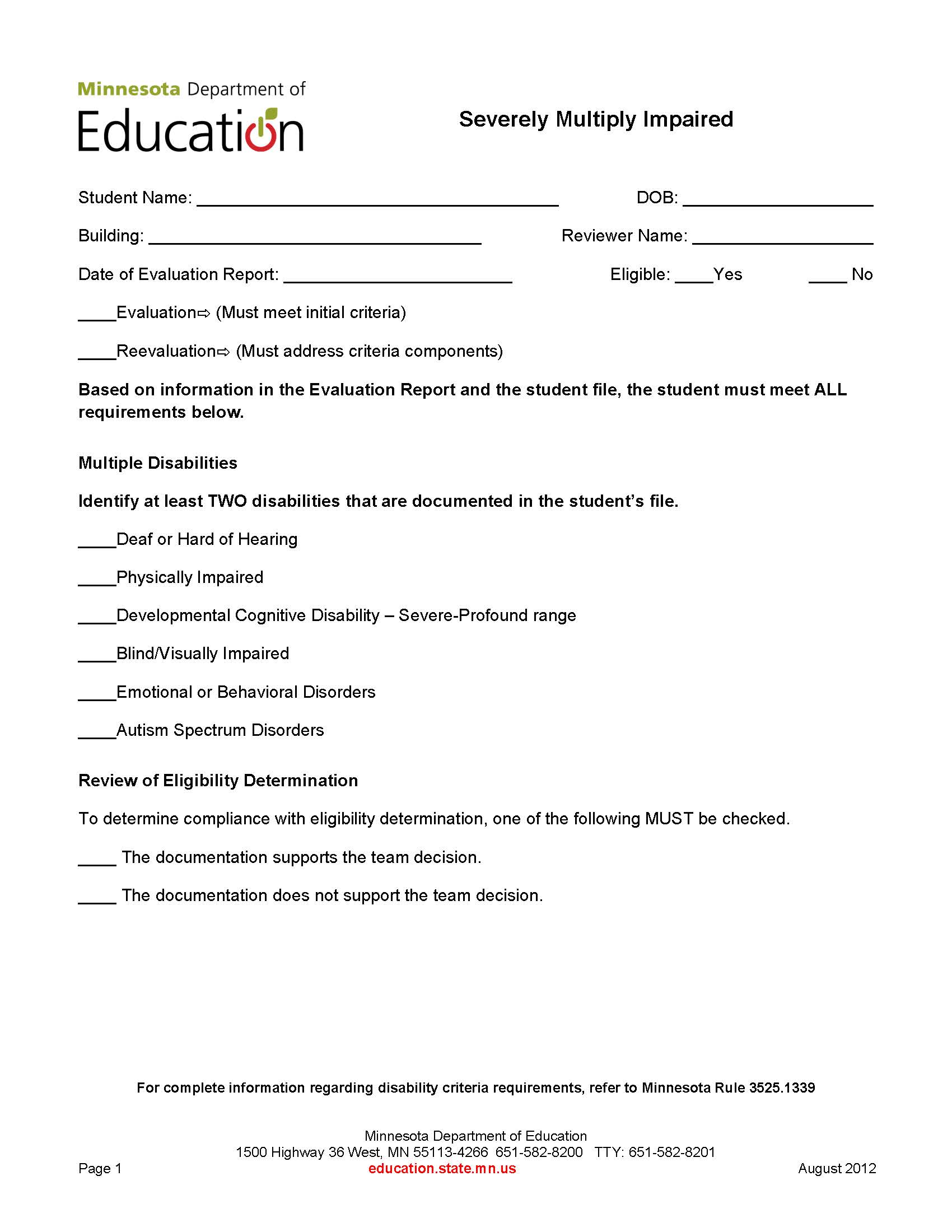
Multiple Disability
Disability Label & Prevalence |
Definition |
General Characteristics |
Identification & Assessment |
Educational Approaches |
Educational Placement Alternatives |
Severe/Multiple Disabilities 1% of General Population |
IDEA – Concomitant [simultaneous] impairments (such as mental retardation-blindness, mental retardation-orthopedic impairment, etc.), the combination of which causes such severe educational needs that they cannot be accommodated in a special education program solely for one of the impairments. The term does not include deaf-blindness. |
Slow acquisition rate of new skills, poor generalization and maintenance, limited communication skills, impaired physical and motor development, deficits in self-help skills, stereotypic and challenging behavior |
Depends on the disabilities present. |
Students should be taught: functionality, age-appropriateness, communication, literacy, recreation and leisure, making choices, access to general education curriculum, selecting and prioritizing instructional targets. |
General Education Classroom Resource Room Programs Separate Classrooms Special schools Residential Facilities Home/Hospital |
Description of 2 evidence-based strategies |
Scaffolding: being situated within a social context whereby the tutor “enables a child or novice to solve a problem, carry out a task, or achieve a goal that would be beyond his unassisted efforts.” (Coyne, Pisha, Dalton, Zeph, & Smith, 2012). Task Analysis (Wakeman, Karvonen, & Ahumada, 2013): breaking a complex skill or chain of behavior into smaller, teachable units. (Heward, 2012). |
Practitioner Based Article related to this area: Include reference and summary of the article. |
Teaching the CCSS is that demands for mathematical competence in today’s world have greatly increased. This is true as well for students with moderate and severe disabilities who will face expectations in jobs and daily living (e.g., workplace charts and graphs, using numerically operated machinery). When teaching the CCSS to students with moderate and severe disabilities, it will be important to incorporate real-life examples in daily instruction. Although mathematics instruction could focus on a few of the earliest mathematics skills throughout the student’s school career, research has shown students with moderate and severe disabilities can learn skills that align with the grade level of their chronological age (Saunders, Bethune, Spooner, & Browder, 2013). |
MN Eligibility Checklist
